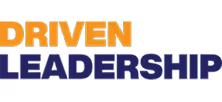Conflict Resolution Training in Seattle, WA


Leadership Training Conflict Resolution Training in Seattle, WA
Seattle teams face unique pressures: rapid tech growth, hybrid work rhythms, competitive university and pro athletics, and the seasonally long stretches of gray that can amplify stress. Conflict left unaddressed reduces productivity, fractures team trust, and undermines performance. Our conflict resolution leadership training for Seattle organizations is designed to convert friction into clearer expectations, stronger relationships, and measurable performance improvements across corporate teams and athletic programs.
Why targeted conflict resolution training matters in Seattle
- Leaders in Seattle manage distributed engineering squads, cross-functional product teams, and high-performing athletic rosters—each with different sources of tension (priorities, role ambiguity, travel schedules, contract pressures).
- Hybrid and remote work increases miscommunication; seasonal morale swings elevate interpersonal strain.
- University and pro athletic environments require high-stakes, rapid conflict navigation between coaches, athletes, support staff, and administrators.
This training targets those realities so teams can resolve disagreements sooner, preserve relationships, and focus energy on outcomes.
Common conflict types we address in Seattle teams
- Task vs. relationship conflict: debates over strategy turn personal when not managed.
- Priority and resource disputes: product vs. operations, or coaching staff vs. athletic directors.
- Cross-cultural and generational friction: diverse perspectives without agreed norms.
- Communication breakdowns in hybrid settings: assumptions replace shared context.
- Power and accountability gaps: unclear decision rights lead to repeated escalations.
Core frameworks and tools taught
- TKI (Thomas-Kilmann Conflict Mode Instrument) — helps leaders identify preferred conflict modes (competing, collaborating, compromising, avoiding, accommodating) and apply the right mode intentionally.
- Interest-based problem solving — move from positional arguments to underlying needs to create sustainable solutions.
- Structured feedback and repair tools — scripted language for initiating difficult conversations and restoring trust after conflict.
- Role clarity and RACI-style decision frameworks — reduce recurring contention by formalizing who decides what.
- Real-time negotiation and de-escalation techniques — practical phrases and pacing methods for high-pressure situations.
- Cultural and psychological-safety lenses — ensure conflict resolution supports inclusion and long-term cohesion.
Workshop formats and experiential elements
We design learning experiences to land immediately in day-to-day work. Formats include:
- Half-day intensive: focused on immediate skill adoption — TKI overview, two role-play scenarios, mini action plan.
- Full-day workshop: deeper diagnostics, multiple experiential rounds, team-level norm-setting, and facilitated debriefs.
- Multi-session series: staggered 90–120 minute modules for deeper behavioral change with homework and coaching between sessions.
- Virtual or hybrid delivery: interactive breakout rooms, live polling, and simulated remote-conflict labs for distributed teams.
- Athletic-team adaptation: field-based role plays, time-pressured decision drills, coach-athlete feedback exercises that mirror game-day dynamics.
Experiential methods used:
- Role-play with rotating roles to practice empathy and perspective-taking.
- Fishbowl simulations to observe dynamics and facilitate group debriefs.
- Case clinics using real, anonymized conflicts from your organization for targeted problem-solving.
- Behavioral rehearsal — short, repeated practice runs of critical scripts until responses become automatic.
Diagnostic process and measurable delivery
Training begins with a diagnostic to ensure relevance:
- Pre-work assessment: confidential survey and optional interviews to map conflict hotspots, recurring patterns, and team priorities.
- Data-informed design: workshops tailored to your team’s dominant conflict modes and scenarios uncovered in diagnostics.
- Learning objectives and success metrics: co-created KPIs such as reduction in formal escalations, improvements in team engagement scores, and faster decision cycles.
- Post-workshop reinforcement: leader coaching sessions, follow-up simulations, and a short playbook tailored to your team.
Outcomes are tracked through follow-up surveys and simple behavioral metrics so leaders can see real change.
Expected outcomes and ROI
Participants consistently report and demonstrate:
- Reduced friction and fewer escalations — clearer decision rules and scripts shorten conflict lifecycles.
- Improved collaboration and faster problem solving — teams move from debate to action with less energy loss.
- Stronger psychological safety — people speak up earlier and more constructively.
- Higher retention and reduced burnout — less interpersonal stress improves well-being, especially during long Seattle winters and intense athletic seasons.
- Performance lift in athletic contexts — improved coach-athlete communication leads to better practice focus and in-game cohesion.
Typical measurable results include declines in HR incidents, improved pulse survey scores on teamwork and trust, and faster project completion or reduced rework from misalignment.
Practical tools to maintain progress
To lock in gains, leaders are equipped with:
- A one-page conflict playbook: agreed norms, scripts for difficult conversations, escalation thresholds.
- Meeting protocols: pre-read expectations, conflict-check agenda items, time-boxed resolution segments.
- Weekly check-ins and conflict retros: brief structured reviews to surface and address small disagreements before they grow.
- Coaching cues for leaders: short, actionable prompts to use in real time (e.g., “Tell me the outcome you need”).
- Micro-practice assignments between sessions to build muscle memory.
Applicability across industries and programs
- Tech and product teams: align cross-functional priorities and resolve sprint or roadmap disputes.
- Operations and service teams: smooth handoffs and reduce customer-impacting friction.
- University and pro athletics: improve coach-staff-athlete dynamics, handle competitive pressure, and resolve travel/scheduling conflicts quickly.
- Nonprofits and public sector: navigate stakeholder conflicts with constrained resources and high mission pressure.
Final note
Conflict is inevitable; unmanaged conflict is costly. Leadership training in conflict resolution tailored for Seattle equips leaders and teams with proven frameworks like TKI, practical scripts, and experiential practice so they can transform disagreement into clearer decisions, stronger relationships, and sustained performance—whether in tech towers, downtown startups, or the locker room.

